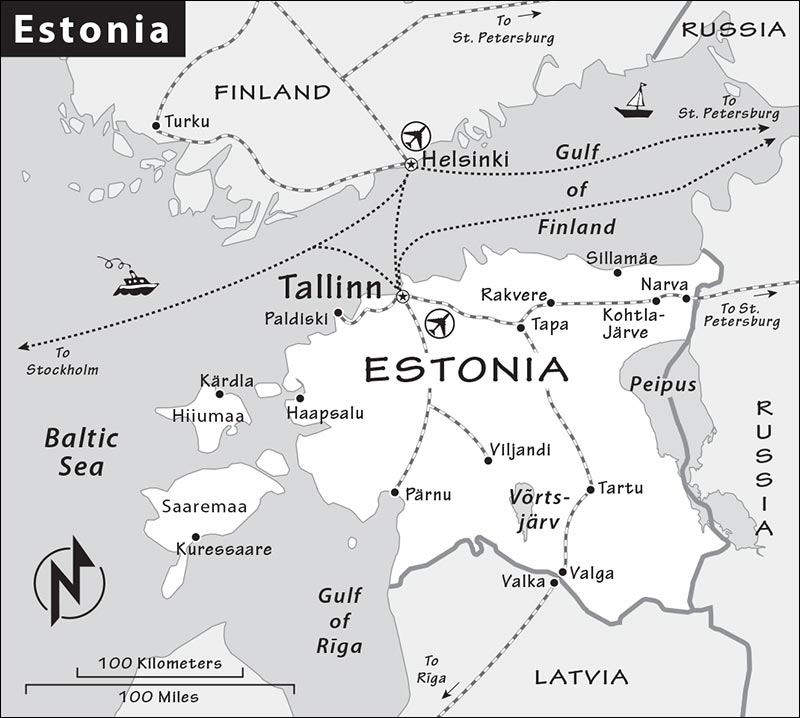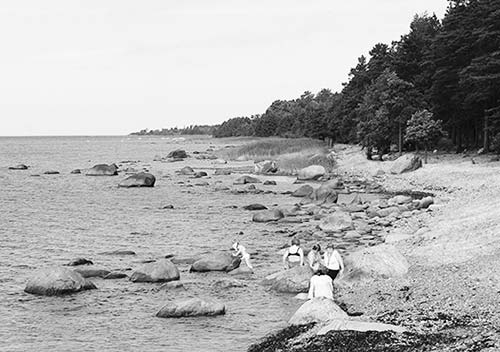Eesti
The most accessible part of the former USSR, Estonia is shaped by its eclectic past and inspired by the prospect of an ever-brighter future. In the European Union, only three micro-states (Cyprus, Luxembourg, and Malta) have a smaller population than Estonia. But like its fellow Baltic countries (Latvia and Lithuania), Estonia has an endearing enthusiasm for the things that make it unique—proving that you don’t have to be big to have a clear cultural identity.
Estonians are related to the Finns and have a similar history—first Swedish domination, then Russian (1710-1918), and finally independence after World War I. In 1940, Estonians were at least as affluent and as advanced as the Finns, but they could not preserve their independence from Soviet expansion during World War II. As a result, Estonia sank into a nearly 50-year period of communist stagnation. Since then, the country has made great strides in its recovery; it joined the EU and NATO in 2004, adopted the euro currency in 2011, and today feels pretty much as “Western” as its Nordic neighbors.
EU membership seemed like a natural step to many Estonians; they already thought of themselves as part of the Nordic world. Language, history, religion, and twice-hourly ferry departures connect Finns and Estonians. Only 50 miles separate Helsinki and Tallinn, and Stockholm is just an overnight boat ride away. Finns visit Tallinn to eat, drink, and shop more cheaply than at home. While some Estonians resent how Tallinn becomes a Finnish nightclub on summer weekends, most people on both sides are happy since the end of the Cold War to have friendly new neighbors.

You’d be wrong to think of this “former USSR” country as backward. Thanks to visionary and aggressive development policies implemented soon after independence—including the designation of Internet access as a basic human right—Estonia is now a global trendsetter in technology. By 1998, every school in Estonia was already online. The country has some of the fastest broadband speeds in the world, Estonians vote and file their taxes electronically, and Skype—used by travelers worldwide to keep in touch—was invented right here. The multibillion-dollar windfall from Skype’s 2005 sale to eBay kickstarted a whole new venture-capital industry that is still paying dividends today.
And yet, despite its modernity, Estonian culture can be romantic—sometimes shaded with a tinge of darkness. This little land has a long, jagged, hauntingly beautiful coastline, and over a thousand lakes. Fifty percent of the landscape is forest, while marshlands and bogs cover another twenty percent. Traditional folk music buoys the national spirit—especially at the Song Festival every five years, where a significant portion of the population convenes to pour out their souls in song. Some of Estonia’s traditions may strike you as quirky. Estonians snack on nearly black rye bread slathered in garlic and bury their dead in evocative pine forests—where skinny trunks recede into the infinite heavens.

Even as Estonia will always face West, across the Baltic, it also faces East, into the Russian hinterlands. One difficult legacy of the Soviet experience is Estonia’s huge Russian population. Most Estonian Russians’ parents and grandparents were brought to Estonia in the 1950s and 1960s to work in now-defunct factories in Tallinn and the northeastern cities. Twenty-five percent of Estonia’s population is now ethnically Russian. Under Vladimir Putin, Russia has demanded better treatment of Estonia’s Russian-speaking population. After Putin declared he would “protect” Russian speakers in Ukraine and fostered a separatist revolt there, some Estonians wondered if something similar could happen here. Making Russians feel at home in Estonia while building a distinctly Estonian culture and identity is one of independent Estonia’s biggest challenges.

Most Estonians speak English—it’s the first choice these days at school. About half can carry on a normal conversation in English. Estonian is similar to Finnish and equally difficult; only a million people speak it worldwide. Two useful phrases to know are “Tänan” (TAH-nahn; “Thank you”) and “Terviseks!” (TEHR-vee-sehks; “Cheers!”). If you’d like to learn a few more phrases, see the Estonian survival phrases on the following page. The farther you go beyond the touristy zones, the more you see that Russian is still Estonia’s second language. If you know some Russian, use it. It’s the mother tongue of about 40 percent of Tallinners (many of whom have no intention of learning Estonian).
Estonian has a few unusual vowel sounds. The letter ä is pronounced “ah” as in “hat,” but a without the umlaut sounds more like “aw” as in “hot.” To make the sound ö, purse your lips and say “oh”; the letter õ is similar, but with the lips less pursed. Listen to locals and imitate. In the phonetics, ī sounds like the long i in “light,” and bolded syllables are stressed.
| English | Estonian | Pronunciation |
| Hello. (formal) | Tervist. | tehr-veest |
| Hi. / Bye. (informal) | Tere. / Nägemist. | teh-reh / nah-geh-meest |
| Do you speak English? | Kas te räägite inglise keelt? | kahs teh raah-gee-teh een-glee-seh kehlt |
| Yes. / No. | Jah. / Ei. | yah / ay |
| Please. / You’re welcome. | Palun. | pah-luhn |
| Thank you (very much). | Tänan (väga). | tah-nahn (vah-gaw) |
| Can I help you? | Saan ma teid aidata? | saahn mah tayd ī-dah-tah |
| Excuse me. | Vabandust. | vaw-bahn-doost |
| (Very) good. | (Väga) hea. | (vah-gaw) hey-ah |
| Goodbye. | Hüvasti. | hew-vaw-stee |
| one / two | üks / kaks | ewks / kawks |
| three / four | kolm / neli | kohlm / nay-lee |
| five / six | viis / kuus | vees / koos |
| seven / eight | seitse / kaheksa | sayt-seh / kaw-hehk-sah |
| nine / ten | üheksa / kümme | ew-hehk-sah / kew-meh |
| hundred | sada | saw-daw |
| thousand | tuhat | too-hawt |
| How much? | Kui palju? | kwee pawl-yoo |
| local currency: (Estonian) crown | (Eesti) krooni | (eh-stee) kroo-nee |
| Where is...? | Kus asub...? | koos ah-soob |
| ...the toilet | ...tualett | too-ah-leht |
| men | mees | mehs |
| women | naine | nī-neh |
| water / coffee | vesi / kohvi | vay-see / koh-vee |
| beer / wine | õlu / vein | oh-loo / vayn |
| Cheers! | Terviseks! | tehr-vee-sehks |
| The bill, please. | Arve, palun. | ahr-veh pah-luhn |